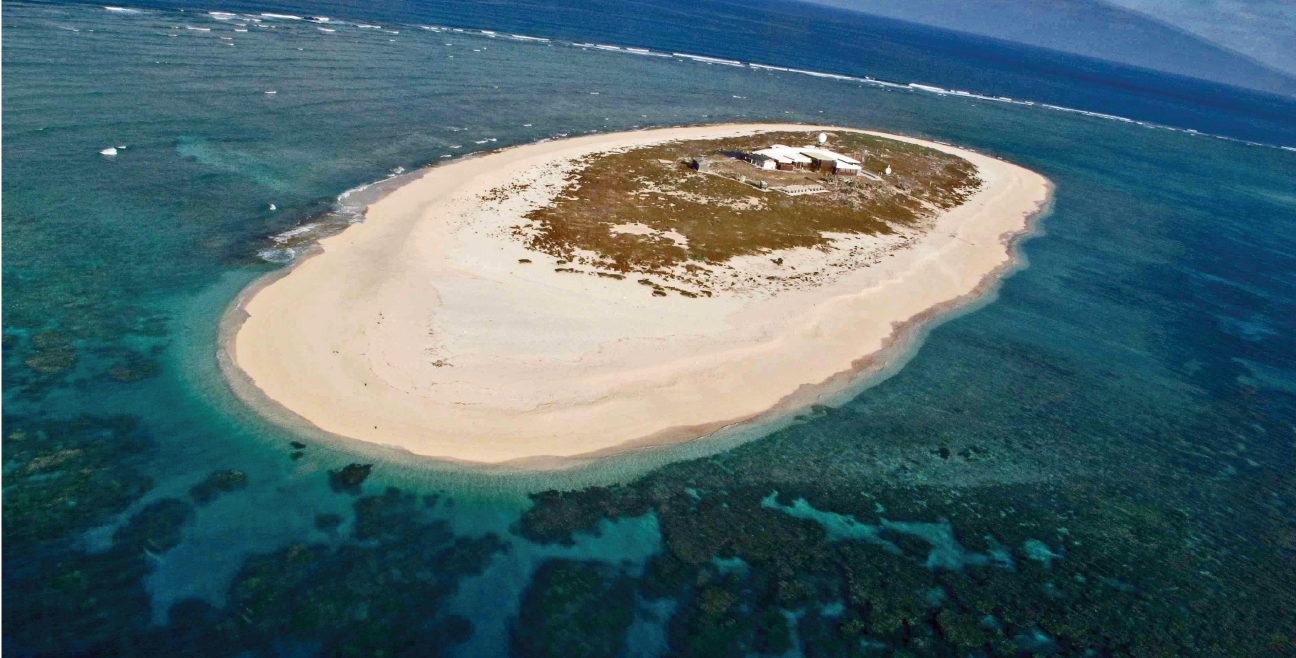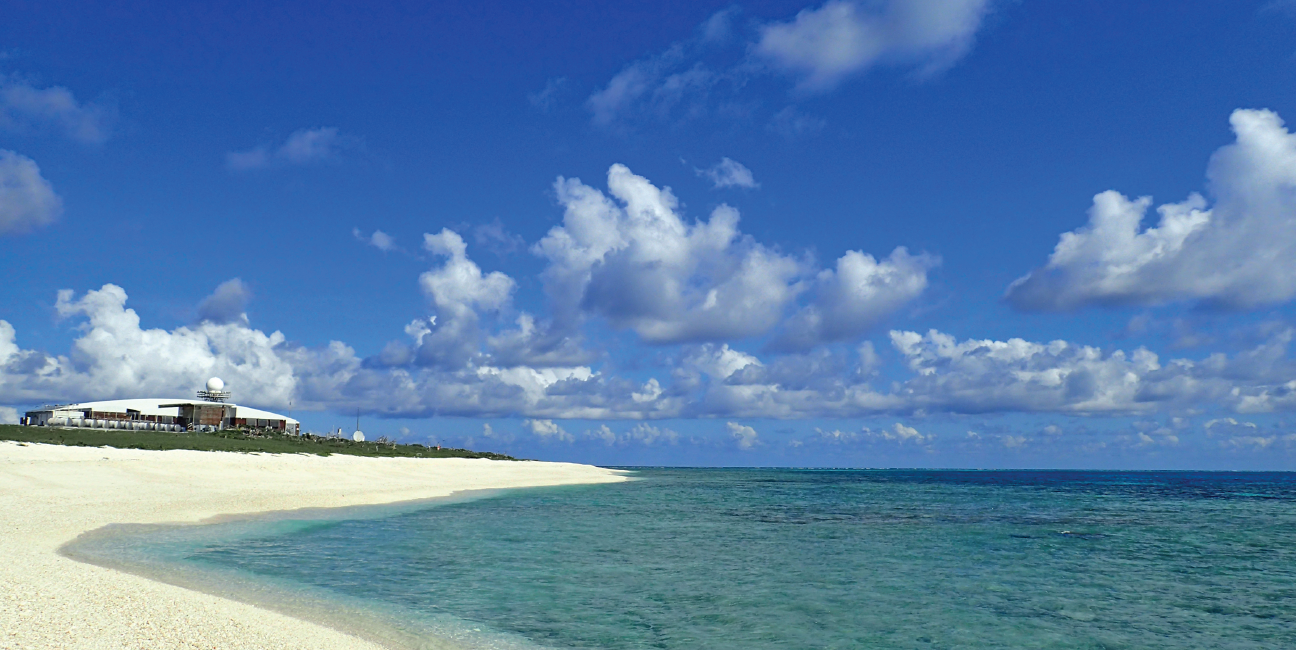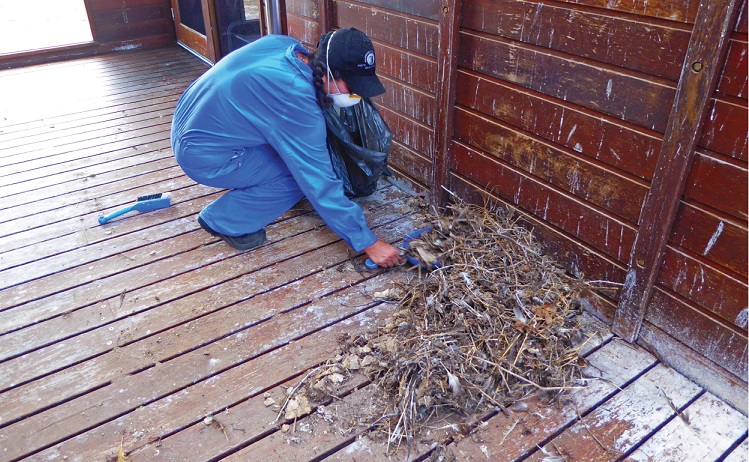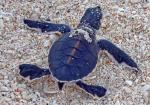Living and working on Willis Island
25 January 2016
As well as Regional Offices in each State and Territory capital, the Bureau has a network of more than 50 field offices across the continent and offshore on neighbouring islands (Cocos, Willis, Norfolk, Lord Howe and Macquarie) and at Casey, Davis and Mawson stations in Antarctica.
Willis Island, located beyond the Great Barrier Reef in the Coral Sea, around 450 kilometres east of Cairns, is home to an abundance of wildlife and an important turtle nesting site. Bureau observers stationed on the island are fortunate to witness the annual migration of green sea turtles coming ashore to build their nests and the birth of the hatchlings. So, what does a typical day look like for staff on the island?
Willis Island is home to a Bureau weather monitoring station maintained by four staff: usually three weather observers, one of whom is Officer-in-Charge, and one Engineering Technician, who live and work on the island for six-month periods at a time.
The island is approximately 450 m x 150 m in size—the width of a footy oval—and only takes a leisurely 15 minutes to walk around.

Willis Island in the coral sea
The Willis Island weather monitoring station was established in 1921 to provide an early cyclone warning service for Queensland, for which it was equipped with a radio transmitter. Today, meteorological equipment includes a defined equipment enclosure and a 7 m high radar tower plus dome. Other equipment includes a desalination plant and enviro-cycle sewage treatment plant. Power generation comprises a hybrid system of a diesel generator combined with a wind generator and solar power.

Willis Island weather monitoring station
A typical day for staff on the island involves delivering synoptic and upper-air observations, supporting our integrated observation network by extending geographic coverage to improve weather monitoring and analysis in the Coral Sea.
The Bureau’s Engineering Technician on Willis Island plays a critical role in keeping fresh water and power flowing on the island, however Evelyn Sandoval, a past Officer-in-Charge, says it’s often the wildlife that keep staff busiest: 'We spend a lot of our time cleaning bird guano off the station building and meteorological instruments,' she says.
If left to build up, seabird guano can obstruct weather observation equipment and accelerate corrosion of meteorological instruments. Read more about maintaining our offshore automatic weather stations in the Coral Sea.

Cleaning seabird guano
As well as being home to several species of seabirds, Willis Island becomes the nesting ground for green turtles from October to March. Staff provide wildlife sightings and behaviour to the Great Barrier Reef Marine Park Authority through their Eyes on the Reef community network.
'During turtle season we counted all the nests laid with thousands of baby turtle eggs incubating under the sand, and were able to experience the miraculous birth journey of the hatchlings digging their way out of the sand and heading out into the Coral Sea.'

Green turtle hatchling
However, according to Evelyn, life on the tiny island surrounded by pristine fringing reefs in the Coral Sea does have its downsides. Everyday items that most of us take for granted—fresh fruit and vegetables, fresh milk—are a luxury on the island.
'Our fresh food arrived with us on the changeover vessel on 19 October 2015, and so throughout October and November we had to preserve as much of the fresh produce as possible by repacking into zip-lock bags, placing into plastic containers filled with water, and freezing.
'The foods I missed most were avocados, lemons, coriander, parsley and lettuce. We would cook and eat communally on the island, which is great for staff moral and meant we tasted different flavours, but I couldn't wait for some fine dining when I returned to Melbourne!'
While meals might not have been the highlight, Evelyn says observing tropical weather and exotic wildlife up close is an once-in-a-lifetime opportunity she wouldn’t have traded for all the avocados in the world!


Comment. Tell us what you think of this article.
Share. Tell others.